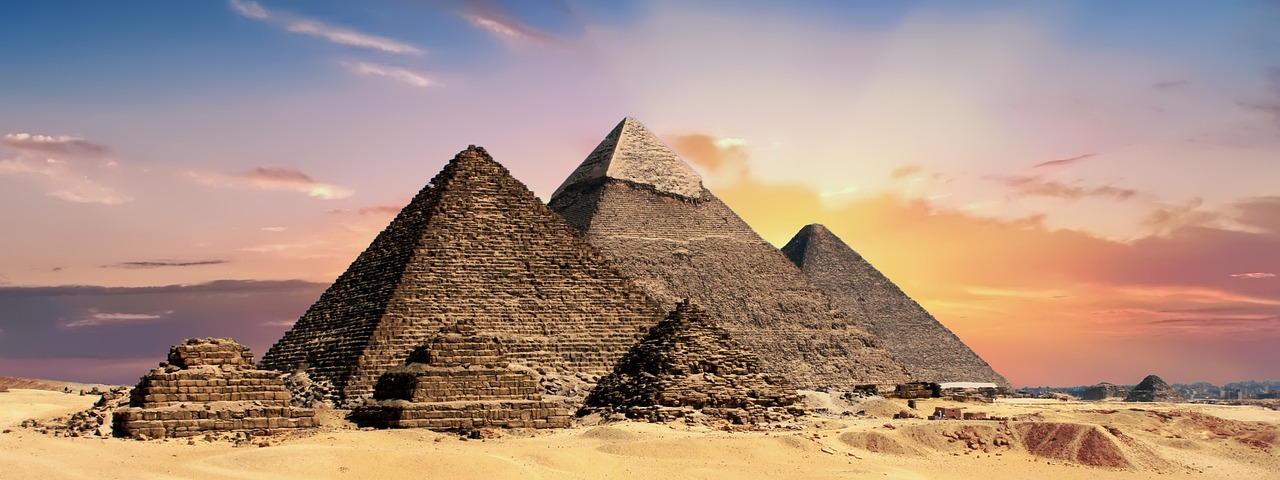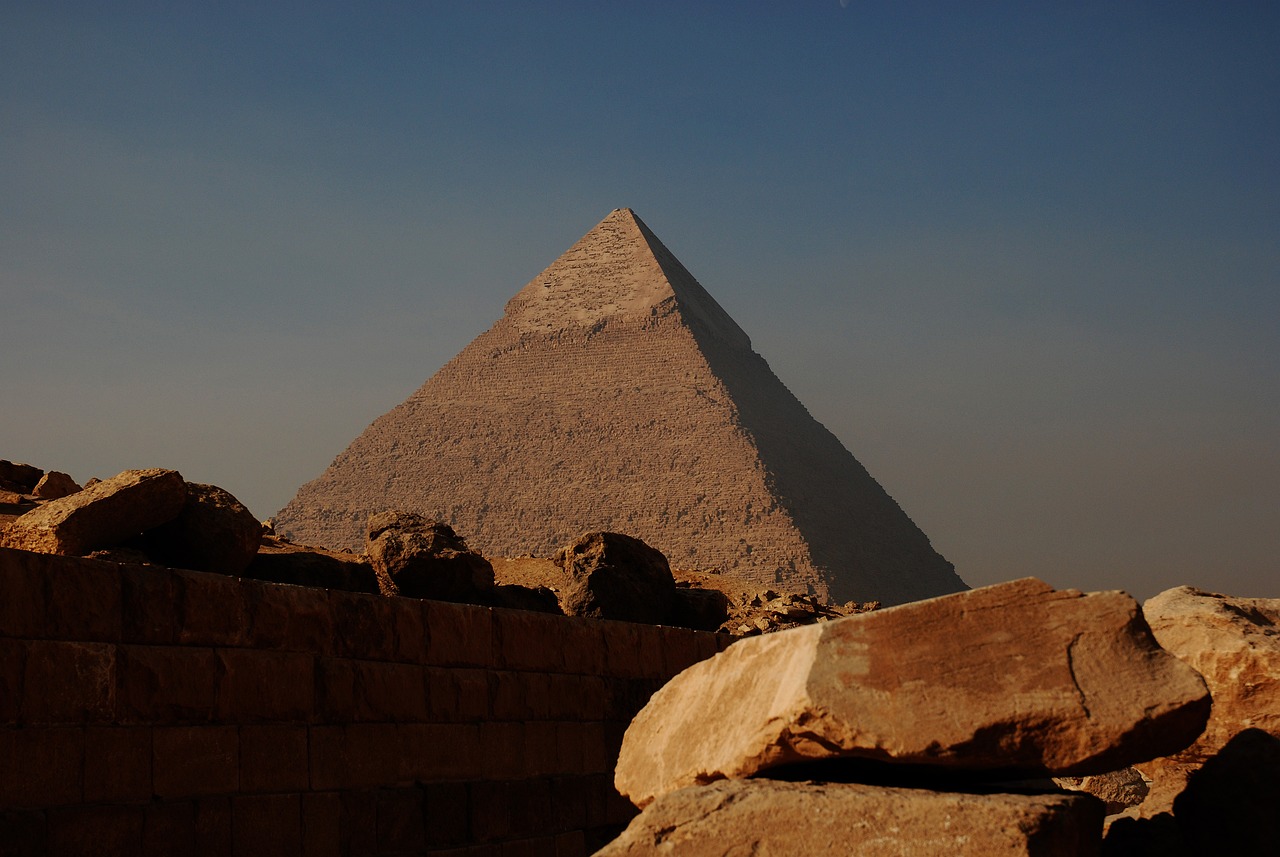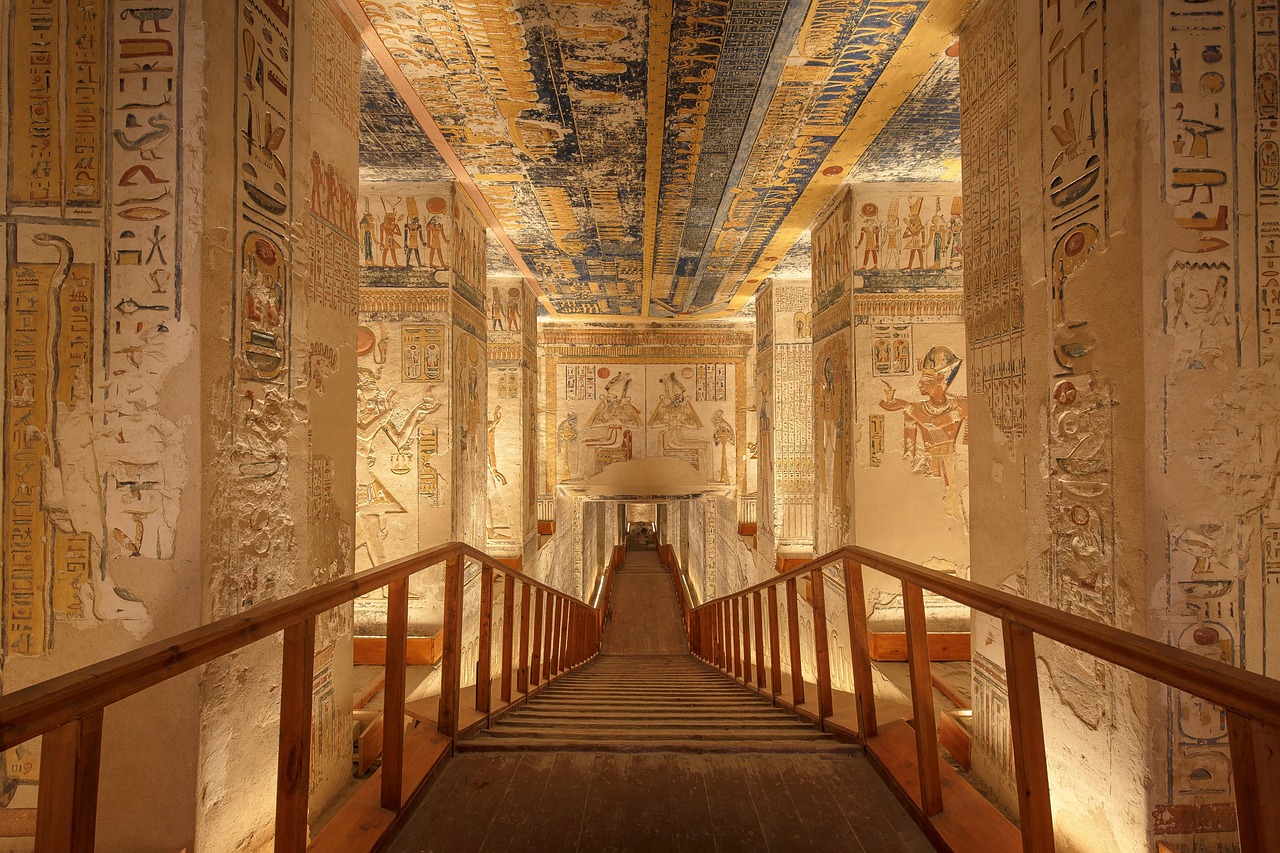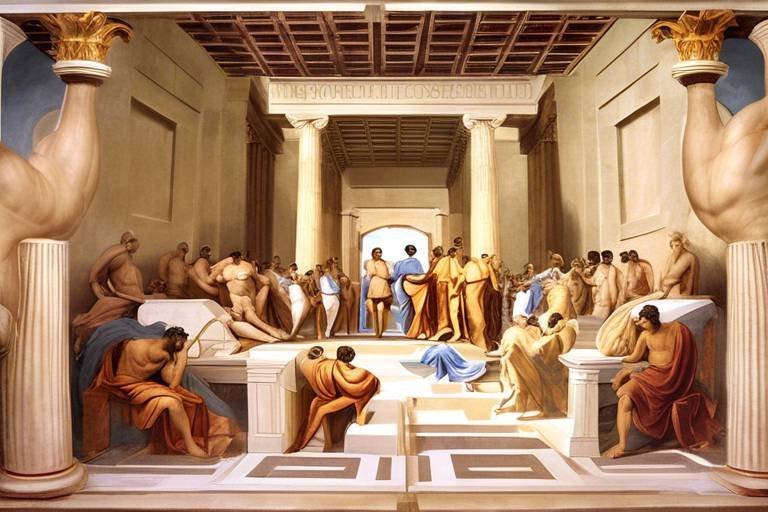The Secrets of Ancient Egyptian Mathematics
Ancient Egyptian mathematics is a captivating subject that unveils the profound knowledge and methodologies employed by this ancient civilization across various mathematical concepts and applications.
The ancient Egyptians devised a distinctive numeral system that incorporated symbols representing powers of 10, enabling intricate calculations and meticulous record-keeping within their society. This unique system set the foundation for their advanced mathematical practices.
Egyptians demonstrated exceptional proficiency in geometry and surveying, as evidenced by the meticulous construction of pyramids and other architectural marvels. Their expertise in these fields showcased a deep understanding of mathematical principles and their practical applications in real-world scenarios.
Ancient Egyptian arithmetic was characterized by innovative calculation methods for addition, subtraction, multiplication, and division. Their pragmatic approach to solving everyday mathematical problems reflected a blend of creativity and precision in mathematical operations.
The exploration of ancient Egyptian mathematics is greatly enriched by the discovery of mathematical papyri, which serve as repositories of knowledge on mathematical concepts, problems, and solutions from that era. These texts offer valuable insights into the mathematical sophistication of this ancient civilization.
The utilization of symbols and notation in ancient Egyptian mathematics laid the groundwork for modern mathematical communication and the development of algebraic concepts. The symbolic language employed by the Egyptians facilitated the transmission of mathematical ideas with clarity and efficiency.
By applying mathematical principles in architecture and engineering, the ancient Egyptians achieved remarkable feats in constructing monumental structures with unparalleled precision and grandeur. Their architectural achievements stand as enduring testaments to their mathematical prowess and ingenuity.
Ancient Egyptian mathematics played a pivotal role in understanding astronomical phenomena, as evidenced by the alignment of pyramids and temples with celestial bodies and the development of sophisticated calendars. The mathematical insights of the Egyptians greatly influenced their astronomical observations and calculations.
The enduring legacy of ancient Egyptian mathematics continues to shape modern mathematical thought and education, underscoring the profound impact of this ancient civilization's mathematical accomplishments. The mathematical heritage left by the Egyptians serves as a testament to the timeless relevance and significance of their mathematical contributions.

Ancient Numerals and Number System
Ancient Egyptian mathematics is a fascinating topic that reveals the advanced knowledge and techniques used by this ancient civilization in various mathematical concepts and applications.
The ancient Egyptians had a unique numeral system that included symbols for powers of 10, allowing for complex calculations and record-keeping in their society. They used hieroglyphs to represent numbers, with different symbols for units, tens, hundreds, thousands, and so on. This system enabled them to perform arithmetic operations efficiently and accurately.
A key feature of the ancient Egyptian number system was the concept of **multiplicative notation**, where different symbols were repeated to indicate multiplication. For example, to represent the number 3, the symbol for 1 was repeated three times. This innovative approach to notation simplified mathematical calculations and paved the way for more sophisticated mathematical concepts.
Moreover, the ancient Egyptians utilized a **hierarchical system** in their numeral representation, where the position of a symbol determined its value. This positional notation system allowed them to work with large numbers and perform complex mathematical operations with ease.
Additionally, the Egyptians employed **fractions** in their number system, using a combination of unit fractions (fractions with a numerator of 1) to express all possible rational numbers. This method of representing fractions was crucial for their architectural and engineering achievements, as it facilitated precise measurements and calculations.
Overall, the ancient Egyptian numeral system was a sophisticated and versatile method of representing numbers, demonstrating their ingenuity and mathematical prowess in ancient times.

Geometry and Surveying Techniques
Ancient Egyptian mathematics is a fascinating topic that reveals the advanced knowledge and techniques used by this ancient civilization in various mathematical concepts and applications.
Ancient Egyptians were masters of geometry and surveying, skills that were crucial in the construction of their monumental structures such as the pyramids. The precision in their architectural designs reflected their deep understanding of mathematical principles. By using simple tools like ropes and plumb bobs, they were able to create perfectly aligned structures that stood the test of time.
Their surveying techniques were so advanced that they could accurately measure land boundaries and create maps of the Nile River, essential for agricultural planning and resource management. The meticulous attention to detail in their measurements ensured the success of their engineering projects, demonstrating the practical application of geometry in their society.
Moreover, the Egyptians' knowledge of geometry extended beyond construction to astronomy. By observing the movements of celestial bodies and aligning their structures with specific stars, they showcased a deep connection between mathematics and the cosmos. This harmonious blend of geometry and astronomy allowed them to create temples and pyramids that served both practical and spiritual purposes.
In essence, the geometric and surveying techniques employed by the ancient Egyptians were not just about building impressive monuments but also about understanding the world around them in a profound and mathematical way.
- How did ancient Egyptians use geometry in their daily lives?
- What tools did they use for surveying?
- How did geometry influence Egyptian architecture?
- What role did astronomy play in Egyptian geometry?
- How has the legacy of Egyptian mathematics impacted modern geometry studies?

Arithmetic and Calculation Methods
Ancient Egyptian arithmetic was not just about numbers; it was a reflection of their practical approach to everyday problem-solving. The Egyptians devised innovative methods for addition, subtraction, multiplication, and division that set them apart from other ancient civilizations. Imagine a world where complex calculations were done without the aid of modern tools—we owe a lot to the ingenuity of these ancient mathematicians.
One fascinating aspect of Egyptian arithmetic was their use of unit fractions. These fractions, such as 1/2, 1/3, and 1/4, were crucial in their calculations and everyday transactions. The Egyptians had a unique way of representing fractions using hieroglyphs, making their mathematical system both efficient and visually striking. It's like they had their own secret language for numbers!
To ensure accuracy in their calculations, ancient Egyptians often used a method called "duplation," which involved doubling numbers to simplify multiplication and division. This technique not only expedited the calculation process but also showcased their mathematical dexterity. It's as if they were performing magic tricks with numbers, revealing the hidden elegance of arithmetic.
Moreover, the Egyptians had a deep understanding of mathematical principles such as prime numbers and factorization. They applied these concepts in various fields, from commerce to construction, demonstrating the practicality and versatility of their arithmetic methods. It's like they were the architects of a numerical world, building intricate structures of logic and precision.
The legacy of Egyptian arithmetic extends beyond ancient times, influencing modern mathematical education and problem-solving strategies. By delving into the methods and techniques used by these ancient mathematicians, we gain a deeper appreciation for the foundational principles of arithmetic that continue to shape our understanding of numbers and calculations today.

Mathematical Papyri and Texts
Ancient Egyptian mathematics is a fascinating topic that reveals the advanced knowledge and techniques used by this ancient civilization in various mathematical concepts and applications.
The ancient Egyptians had a unique numeral system that included symbols for powers of 10, allowing for complex calculations and record-keeping in their society.
Egyptians excelled in geometry and surveying, evident in the precise construction of pyramids and other structures, showcasing their mastery in mathematical principles and applications.
Ancient Egyptian arithmetic involved innovative methods for addition, subtraction, multiplication, and division, showcasing their practical approach to solving everyday mathematical problems.
The study of ancient Egyptian mathematics is enriched by the discovery of mathematical papyri, which contain a wealth of knowledge on mathematical concepts, problems, and solutions from that era.
The use of symbols and notation in ancient Egyptian mathematics provided a foundation for modern mathematical communication and paved the way for the development of algebraic concepts.
The application of mathematical principles in architecture and engineering allowed the ancient Egyptians to create monumental structures with precision and grandeur, showcasing their mathematical prowess.
Ancient Egyptian mathematics played a crucial role in understanding astronomical phenomena, as evidenced by the alignment of pyramids and temples with celestial bodies and the development of calendars.
The legacy of ancient Egyptian mathematics continues to influence modern mathematical thought and education, highlighting the enduring impact of this ancient civilization's mathematical achievements.
Ancient Egyptian mathematical papyri provide valuable insights into the mathematical knowledge and practices of this ancient civilization. These texts offer a glimpse into the mathematical problems they encountered and the solutions they devised. The papyri serve as a window into the mathematical thinking of the time, showcasing the ingenuity and creativity of ancient Egyptian mathematicians. Through the study of these texts, modern scholars can unravel the mathematical techniques and applications that were employed in various aspects of ancient Egyptian life, from trade and commerce to architecture and astronomy.

Mathematical Symbols and Notation
Ancient Egyptian mathematics utilized a range of symbolic representations and notations to express mathematical concepts and calculations. These symbols were not only practical but also held symbolic significance within their culture. For instance, the symbol of the eye of Horus represented fractions, with each part of the eye denoting a different fraction value. This unique approach to notation allowed the ancient Egyptians to perform complex calculations and record mathematical information efficiently.
In addition to their symbolic representations, ancient Egyptian mathematicians also developed hieroglyphic symbols to represent numbers and mathematical operations. These symbols were not only functional but also aesthetically pleasing, reflecting the Egyptians' appreciation for art and beauty in all aspects of their civilization. The use of these symbols in mathematical texts and calculations showcased the Egyptians' artistic and mathematical prowess intertwined in a harmonious blend.
The development of mathematical symbols and notations in ancient Egypt laid the foundation for modern mathematical communication and notation systems. The systematic use of symbols for numbers, operations, and mathematical concepts provided a universal language for conveying mathematical ideas across generations and cultures. This early form of symbolic representation in mathematics paved the way for the development of algebraic notation and the standardization of mathematical symbols that we use today.
Moreover, the use of in ancient Egyptian texts and papyri allowed for the preservation and dissemination of mathematical knowledge. By recording mathematical concepts and calculations using symbols and notations, the ancient Egyptians created a lasting legacy of mathematical wisdom that continues to inspire and educate scholars and mathematicians to this day.

Application in Architecture and Engineering
Ancient Egyptian mathematics played a pivotal role in the architectural and engineering marvels of the civilization. The precise construction of pyramids, temples, and other structures stands as a testament to their mathematical prowess. By applying geometric principles and surveying techniques, the Egyptians were able to create monumental buildings that aligned with celestial bodies and exhibited remarkable symmetry.
Moreover, the use of arithmetic and calculation methods in architectural design allowed for accurate measurements and intricate detailing in construction projects. The application of mathematical concepts in engineering enabled the Egyptians to overcome challenges in building massive structures, demonstrating their innovative problem-solving skills.
One of the most striking examples of mathematical application in architecture is the Great Pyramid of Giza, which showcases advanced mathematical knowledge in its design and alignment with the cardinal points. The precision in the layout and dimensions of the pyramid reflects the meticulous calculations and planning that went into its construction, highlighting the importance of mathematics in ancient Egyptian architecture.

Astronomical Alignments and Calculations
The ancient Egyptians were not only skilled mathematicians but also keen astronomers, as demonstrated by their precise astronomical alignments and calculations. They meticulously observed the movements of celestial bodies, aligning their pyramids and temples with astronomical significance. These alignments were not mere coincidences but deliberate calculations based on astronomical observations. The alignment of the Great Pyramid of Giza with the cardinal points is a testament to their advanced knowledge of astronomy and geometry, serving as a celestial compass that marked significant events such as solstices and equinoxes.
Moreover, the ancient Egyptians developed sophisticated calendars based on their astronomical observations, allowing them to track time accurately and predict celestial events. By studying the stars and constellations, they were able to develop a calendar system that guided their agricultural practices and religious ceremonies. The alignment of temples with specific celestial events also served a symbolic and spiritual purpose, connecting the earthly realm with the celestial realm in a harmonious union of mathematics, astronomy, and spirituality.
The intricate relationship between astronomy and mathematics in ancient Egypt extended beyond architectural alignments. The development of the 365-day calendar, divided into 12 months of 30 days each with an additional 5 intercalary days, showcased their mathematical precision in harmonizing solar and lunar cycles. This calendar system not only regulated their agricultural activities but also played a crucial role in religious ceremonies and societal events, reflecting the deep-rooted connection between mathematics, astronomy, and cultural practices.
Furthermore, the ancient Egyptians' understanding of celestial movements enabled them to predict events such as the annual flooding of the Nile River, essential for their agricultural prosperity. By aligning their structures with celestial bodies and incorporating astronomical calculations into their daily lives, the ancient Egyptians demonstrated a holistic approach to mathematics that integrated practical applications with spiritual beliefs. Their legacy in astronomical alignments and calculations continues to inspire modern astronomers and mathematicians, highlighting the enduring influence of ancient Egyptian wisdom on our understanding of the cosmos.

Legacy and Influence on Modern Mathematics
Ancient Egyptian mathematics is a fascinating topic that reveals the advanced knowledge and techniques used by this ancient civilization in various mathematical concepts and applications.
Ancient Egyptian mathematics has left a profound legacy that continues to influence modern mathematical thought and education. The mathematical innovations of the ancient Egyptians have paved the way for many concepts and principles that are still utilized in contemporary mathematics.
The meticulous geometric constructions and precise calculations evident in the architecture of pyramids and temples showcase the enduring influence of Egyptian mathematical principles on modern engineering and design. The legacy of their numerical system, with symbols for powers of 10, has influenced the development of number systems and arithmetic methods used today.
Moreover, the mathematical papyri discovered from ancient Egypt provide valuable insights into the mathematical problems and solutions of that era, serving as a foundation for further mathematical exploration and research. The use of symbols and notation in Egyptian mathematics has greatly contributed to the evolution of algebraic concepts and mathematical communication.
Astronomical alignments and calculations, such as the alignment of structures with celestial bodies, demonstrate the Egyptians' advanced understanding of astronomy and its integration with mathematics. This intersection of disciplines has had a lasting impact on modern astronomical studies and calendar systems.
Overall, the ancient Egyptian mathematical achievements have not only stood the test of time but also continue to inspire and influence the field of mathematics, showcasing the enduring legacy of this remarkable civilization.
Q: Were the ancient Egyptian mathematical methods complex?
A: While the methods may seem intricate, the ancient Egyptians had practical approaches to arithmetic and geometry, tailored to their societal needs.
Q: How did ancient Egyptian mathematics influence modern algebra?
A: The use of symbols and notation in Egyptian mathematics laid the groundwork for modern algebraic concepts and mathematical communication.
Q: What role did mathematics play in ancient Egyptian architecture?
A: Mathematics was crucial in the precise construction of monumental structures like pyramids, showcasing the Egyptians' mathematical prowess in engineering and design.
Frequently Asked Questions
- What are some key features of Ancient Egyptian mathematics?
Ancient Egyptian mathematics is known for its unique numeral system, advanced geometry and surveying techniques, innovative arithmetic methods, mathematical papyri containing valuable knowledge, use of symbols and notation, application in architecture and engineering, astronomical alignments, and lasting influence on modern mathematics.
- How did Ancient Egyptians use mathematics in architecture and engineering?
The ancient Egyptians applied mathematical principles in the construction of monumental structures like pyramids and temples, using precise calculations for dimensions, angles, and alignments. This showcased their mathematical prowess and engineering skills in creating impressive architectural marvels.
- What role did mathematics play in Ancient Egyptian astronomy?
Ancient Egyptian mathematics played a crucial role in astronomical observations and calculations. The alignment of pyramids and temples with celestial bodies, development of calendars based on astronomical events, and understanding of celestial phenomena demonstrate the significant influence of mathematics on their astronomical studies.



















